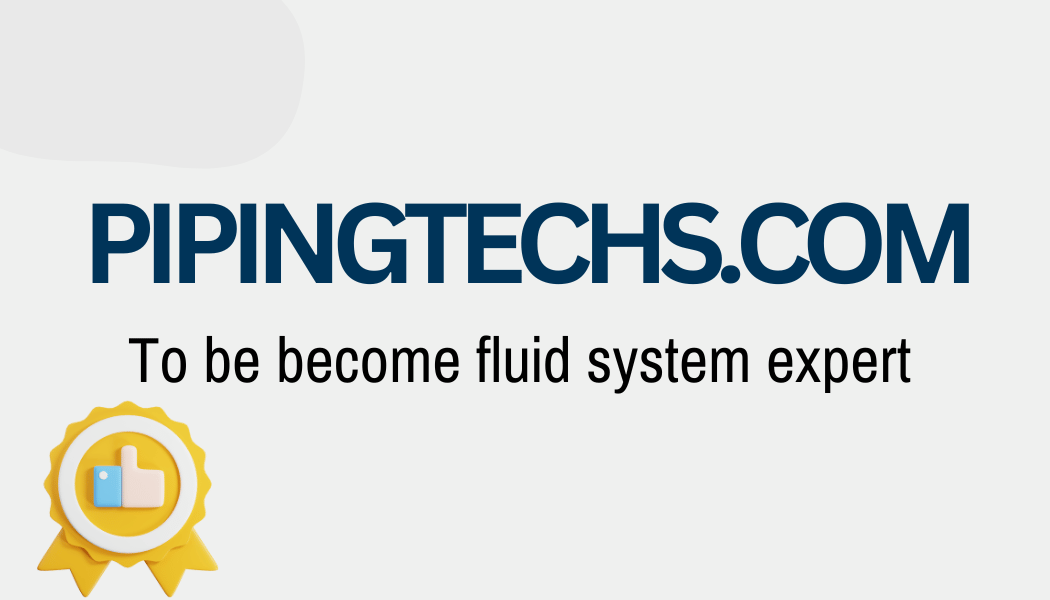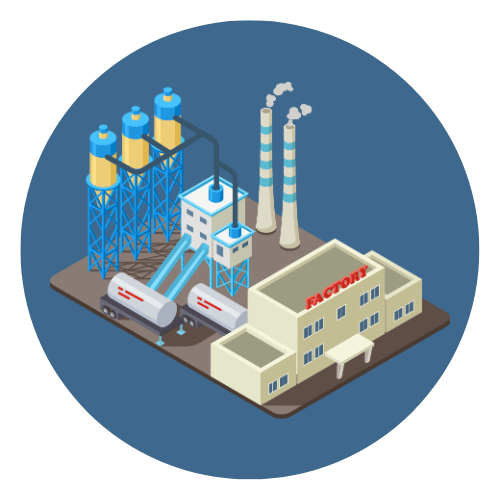In various industries like construction, plumbing, oil and gas, and manufacturing, pipes play a crucial role in the transportation of fluids and gases. However, choosing the correct pipe dimensions is vital to ensure efficiency, safety, and proper functioning of the system. This article delves into the essential aspects of pipe dimensions, examining different pipe sizes, wall thicknesses, standards, and their application across diverse sectors. It also provides a detailed understanding of how pipe dimensions are measured and classified, the significance of standards like the American National Standards Institute (ANSI), American Society for Testing and Materials (ASTM), and the role of pipe schedules in determining dimensions.
Pipe Dimensions Explained: Understanding Key Aspects, Standards, and Applications
Contents
- 1 I. What is pipe dimension?
- 2 II. Basic Terminology in Pipe Dimensions
- 2.0.1 1. Nominal Pipe Size (NPS)
- 2.0.2 2. Outer Diameter (OD)
- 2.0.3 3. Inner Diameter (ID)
- 2.0.4 4. Wall Thickness
- 2.0.5 5. Pipe Schedule
- 2.0.6 6. Pipe Length
- 2.0.7 7. Diameter Nominal (DN)
- 2.0.8 8. Schedule Number
- 2.0.9 9. Fluid Flow Capacity
- 2.0.10 10. Pipe End Types
- 2.0.11 11. Pressure Rating
- 2.0.12 12. Burst Pressure
- 2.1 Conclusion
- 3 III. Common Pipe Dimensions
- 4 IV.Common Standards for Pipe Dimensions
- 4.0.1 1. American National Standards Institute (ANSI)
- 4.0.2 2. American Society for Testing and Materials (ASTM)
- 4.0.3 3. International Organization for Standardization (ISO)
- 4.0.4 4. British Standards (BS)
- 4.0.5 5. Japanese Industrial Standards (JIS)
- 4.0.6 6. MSS-SP (Manufacturers Standardization Society of the Valve and Fittings Industry)
- 4.0.7 7. DIN Standards (Deutsches Institut für Normung)
- 4.0.8 8. API (American Petroleum Institute)
- 4.0.9 9. AWWA (American Water Works Association)
- 5 V. Understanding Pipe Schedules
- 6 VI. Industrial Applications of Pipe Dimensions
- 7 VII . Factors Affecting the Selection of Pipe Dimensions
- 7.0.1 1. Pressure Requirements
- 7.0.2 2. Flow Rate
- 7.0.3 3. Temperature
- 7.0.4 4. Material Properties
- 7.0.5 5. Corrosion and Chemical Resistance
- 7.0.6 6. Fluid Characteristics
- 7.0.7 7. Environmental Conditions
- 7.0.8 8. Velocity of Flow
- 7.0.9 9. Cost and Budget Constraints
- 7.0.10 10. Pipe Schedule
- 7.0.11 11. Regulatory Standards and Compliance
- 8 VIII. Conclusion
Related posts

Nominal Pipe Size Chart
Read more
Contents1 I. What is Nominal Pipe Size?1.1 Key Features of NPS:1.2 Application:2 II. Understanding Nominal Pipe Size2.1 1. Concept of NPS2.2 2. Diameter and Thickness2.3 3. Standardization2.4 4. Measurement Units2.5 5. Using NPS in Calculations2.6 6. Applications Across Industries2.7 7. Importance of NPS Charts3 III. Nominal Pipe Size Chart Explained3.1 Understanding the NPS Chart3.1.1 1. […]

How to become a Pipe Welder
Read more
Contents1 I. Types of Pipe Welding Techniques1.0.1 1. Shielded Metal Arc Welding (SMAW)1.0.2 2. Gas Tungsten Arc Welding (GTAW/TIG)1.0.3 3. Gas Metal Arc Welding (GMAW/MIG)1.0.4 4. Flux Cored Arc Welding (FCAW)2 II. How to become a Pipe Welder2.1 Step 1: Obtain a High School Diploma or GED2.2 Step 2: Pursue Technical Training2.3 Step 3: Gain […]

Welding Codes for Piping
Read more
Contents1 I. What are Welding Codes for Piping?2 2.1 Purpose of Welding Codes for Piping:3 II. Major Welding Codes for Piping3.1 1. ASME B31 Series – Pressure Piping Codes3.2 2. API (American Petroleum Institute) Codes3.3 3. AWS (American Welding Society) Standards3.4 4. ISO (International Organization for Standardization) Codes3.5 5. EN (European Norm) Standards3.6 Key Differences […]

Understanding Engineering Drawings: A Comprehensive Guide”
Read more
Contents1 I. Types of Engineering Drawings1.1 1. Orthographic Drawings1.2 2. Isometric Drawings1.3 3. Detailed Drawings1.4 4. Schematic Drawings1.5 5. Assembly Drawings1.6 6. Exploded View Drawings1.7 7. Perspective Drawings1.8 8. Block Diagrams1.9 9. Flowcharts1.10 10. 3D Modeling and Renderings2 II. Key Elements of an Engineering Drawing2.1 1. Title Block2.2 2. Drawing Scale2.3 3. Line Types and […]

API 6A Standard Pdf : Specification for Wellhead and Christmas Tree Equipment
Read more
Contents1 I. What are API 6A Standards?1.1 Key Aspects of API 6A Standards:2 II. Key Components and Specifications of API 6A2.1 1. Wellhead Equipment2.2 2. Christmas Trees2.3 3. Connectors and Flanges2.4 4. Material Requirements2.5 5. Pressure and Temperature Ratings2.6 6. Testing and Quality Assurance2.7 7. Design and Manufacturing Standards2.8 8. Traceability and Documentation3 III. Design […]

API 620 Standard Pdf: Design and Construction of Large Welded Low Pressure Storage Tanks
Read more
Contents1 I. What is API 620?1.0.1 Key Aspects of API 620:2 II. Scope of API 620 Standard2.0.1 Key Elements of the API 620 Scope:3 III. Design Requirements for API 620 Tanks3.0.1 1. Structural Design Criteria:3.0.2 2. Materials and Toughness:3.0.3 3. Welding Standards and Procedures:3.0.4 4. Tank Roof and Bottom Design:3.0.5 5. Environmental and Loading Considerations:3.0.6 […]

API 1104 Standard for Welding Pipelines and Related Facilities Pdf
Read more
Contents1 I. Scope of the API 1104 Standard1.0.1 Applications Beyond Pipelines2 II. Key Sections of the API 1104 Standard2.0.1 1. Welding Procedure Specifications (WPS)2.0.2 2.0.3 2. Qualification of Welding Procedures2.0.4 3. Welder Qualification2.0.5 4. Inspection and Testing2.0.6 5. Defect Acceptance Criteria2.0.7 6. Repair and Rework of Welds2.0.8 7. Design and Preparation of the Weld Joint2.0.9 […]

API 610 Standard Pdf : Centrifugal Pumps for Petroleum, Petrochemical and Natural Gas Industries
Read more
Contents1 I. What is API 610?2 II. Historical Background2.1 Key Milestones in API 610’s Development:2.2 Notable Changes in Recent Editions:2.3 Global Influence and ISO Harmonization3 III. Types of Pumps Covered Under API 6103.1 1. Overhung Pumps (OH)3.2 2. Between-Bearings Pumps (BB)3.3 3. Vertically Suspended Pumps (VS)3.4 Summary of API 610 Pump Types4 IV. Key Design […]

AWS A2.4 Standard: Symbols for Welding, Brazing, and Nondestructive Examination Pdf
Read more
Contents1 I. What is the AWS A2.4 Standard?1.0.1 Key Aspects of AWS A2.41.0.2 Importance of AWS A2.42 II. Key Components of AWS A2.42.0.1 1. Welding Symbols2.0.2 2. Brazing Symbols2.0.3 3. Nondestructive Examination (NDE) Symbols2.0.4 4. Supplementary Symbols and Data2.0.5 5. Combination of Symbols2.0.6 6. Orientation and Placement of Symbols on Drawings3 III. The Structure of […]

API 653 Standard PDF: Tank Inspection, Repair, Alteration, and Reconstruction
Read more
Contents1 What is API 653 standard?1.1 Key Aspects of the API 653 Standard1.2 Importance of API 653 in Industry2 II. Key Components of API 6533 III. API 653 Inspection Requirements3.1 Types of Inspections3.2 Inspection Frequency and Intervals3.2.1 Procedures and Checklist for Inspections4 IV. Reconstruction and Rerating of Tanks4.0.1 1. Reconstruction of Tanks4.0.2 2. Rerating of […]


 Automation System
Automation System  Energy Engineeing
Energy Engineeing  Instrumentation System
Instrumentation System  Mechanical Engineeing
Mechanical Engineeing  Piping Technologies
Piping Technologies  Transportations
Transportations  Manufacturing
Manufacturing  Training Material
Training Material 




